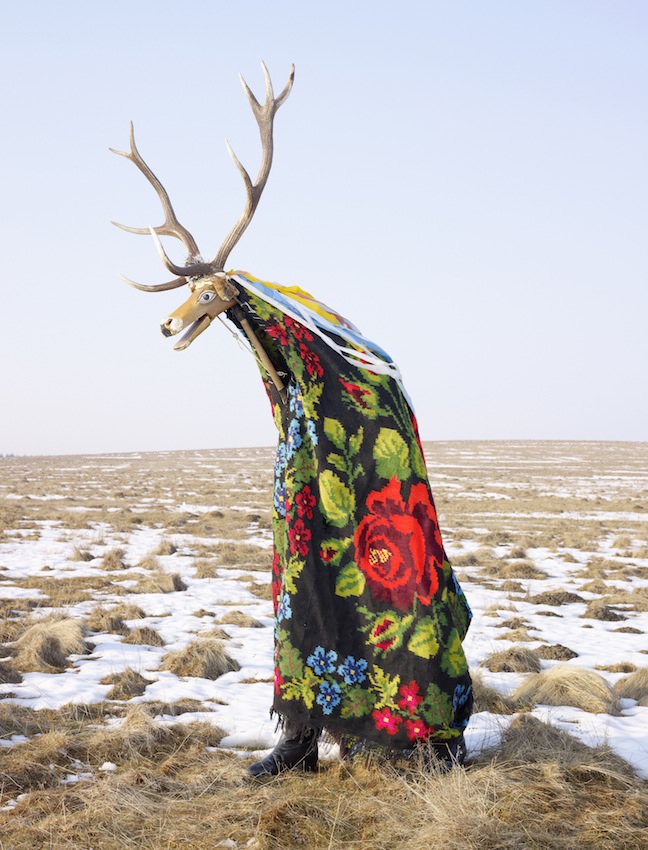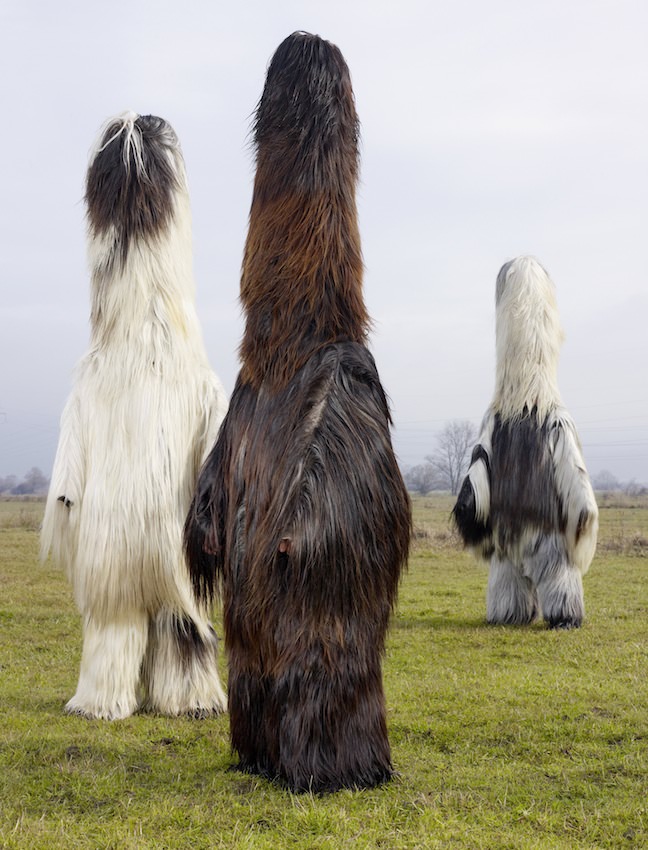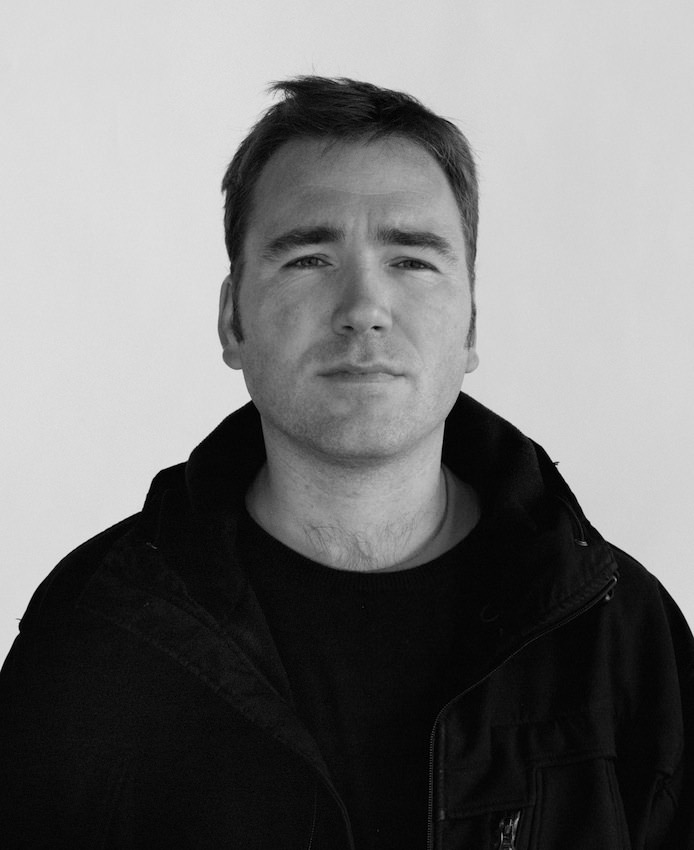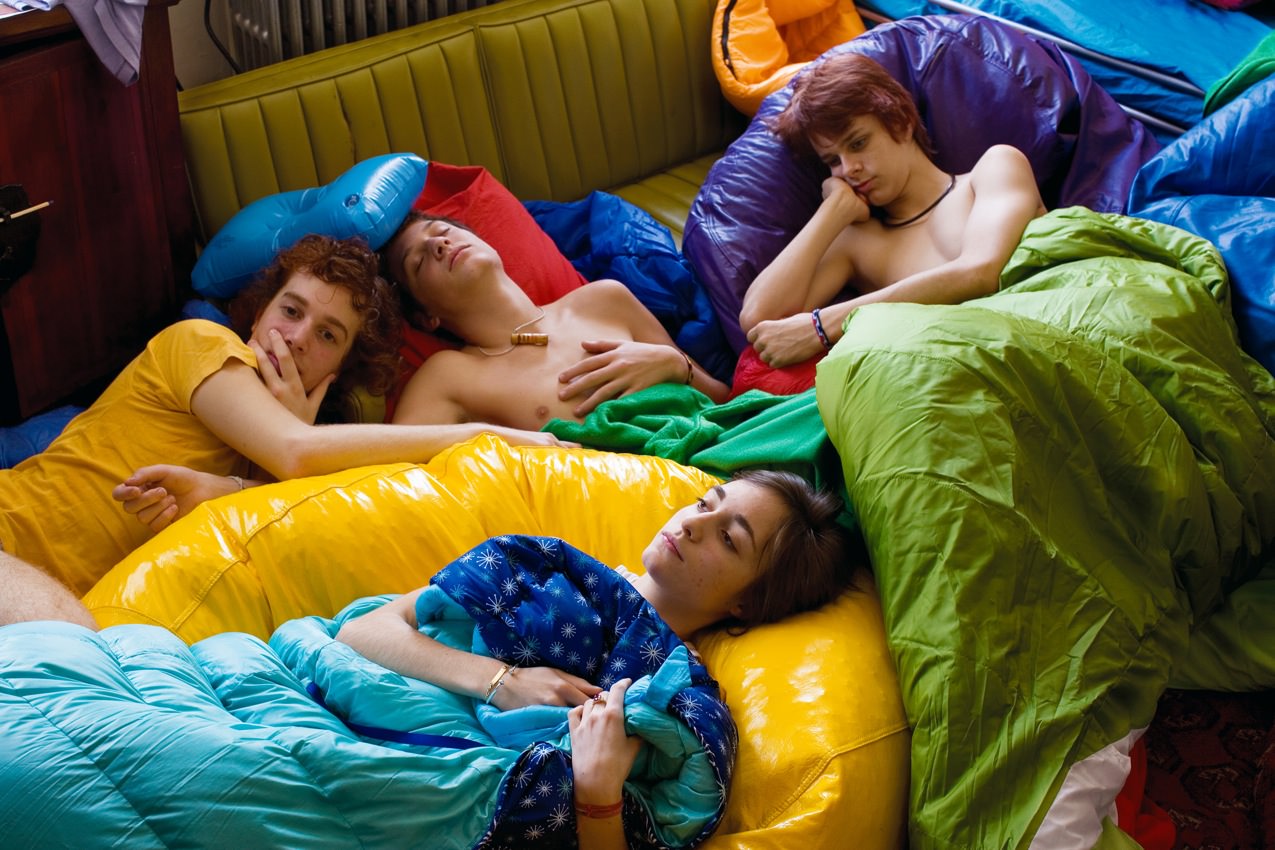Charles Freger’s “Wilder Mann” series is currently on view at Yossi Milo Gallery and the Gallery at Hermes in New York. For this body of work – making its U.S. debut – the portrait photographer turned his lens toward Europe’s “wild men,” regional groups still acting out ancestral traditions. What he found were a lot more connections geographically than had been documented, so he published a book. The complete collection will be published in a monograph by Thames & Hudson.
WHITEWALL: You started shooting this series in 2010. What was the idea behind it all at first?
CHARLES FREGER: First I was really just discovering. I had no idea I would work on so many groups. And then I made the research and started to meet with anthropologists to know what was the potential. Often, anthropologists are focused on one region…so I had to find information in museums, on the Internet, and speaking to a lot of people.

Archival Pigment Print
101 x 77 cm
WW: What made you want to photograph these “wild men?”
CF: I think I discovered it step by step. It was instinctive. There was no project at the start. Very quickly the character of the bear, became the character of the whole project.
WW: The story behind the character, was that what interested you or was it more visual?
CF: It’s always both of these, but I start by the aesthetic. I’ve been pretty selective with the characters I was photographing, like only organic, fur, bears, horns, feathers, leaves…I wanted to photograph what was animal in these characters.

Archival Pigment Print
And after that, the next step was to take the in the right landscape and to build an image around them; to understand what it was and to write for the book with anthropologists what was each tradition, when it happened, what it is, what it means, to make a connection between them all.
WW: What connections did you find between them?
CF: Often the common point with these traditions is the costume. It is pretty oppressive, you keep it on for a long time. The mask is pretty hot. At the same time there is a lot of alcohol, and on top of that they don’t sleep much.

46 x 37 cm
Sometimes yes, for some traditions you can imagine that they really twist their identity, they start to believe, they act like they are someone else.
WW: Were there themes that you saw over and over again?
CF: The idea of the cycle of nature. The tradition is really about chasing death, chasing the winter, welcoming the spring. Now we have the New Year and Christmas, but all of these have been organized on the top of pagan traditions. Originally, Christmas came on the shortest day of the year. There are still elements [from pagan traditions] that are really alive.
WW: You went to 19 different countries for this project and we saw that you recently went to Japan?
CF: I don’t call that series [in Japan] “Wilder Mann.” It’s very close, though. That’s why its interesting, to see that the tradition at the same time of the year with the same idea.
In Japan they have wooden masks and they are dressed with rice straw or sometimes with trees, and they go into the houses and scare the kids into behaving well. The phenomenon is really similar, it happens in Macedonia…half of the European countries. It’s in early January.
WW: How interesting that the same tradition exists in a similar way thousands of miles away!
CF: At first I was thinking that the tradition came with the sailors from Portugal or from Germany or from Holland. But when I went to Japan, they told me the tradition was really old, and I found similar traditions all over Japan for more than 1000 years. It’s also very possible that there is an immigration of these traditions from Russia, Siberia, where you find shamanism in the south of Siberia, in korea…I think its not just traveling, I think there is a slight part of universality.
There are all these kinds of pagan traditions that you find all over the world. I didn’t have any expectation of showing universality but it came by itself.
Charles Fréger, born in Bourges, France in 1975, is a graduate of the Rouen Art School. His work has been devoted almost entirely to portraiture and to social groups. Fréger has already published 11 books and has exhibited his work extensively in such diverse places as China, France, Germany, Japan, Luxembourg, South Korea and Switzerland. He is also the founder of the artistic network Piece of Cake. Fréger lives and works in Rouen, France.








